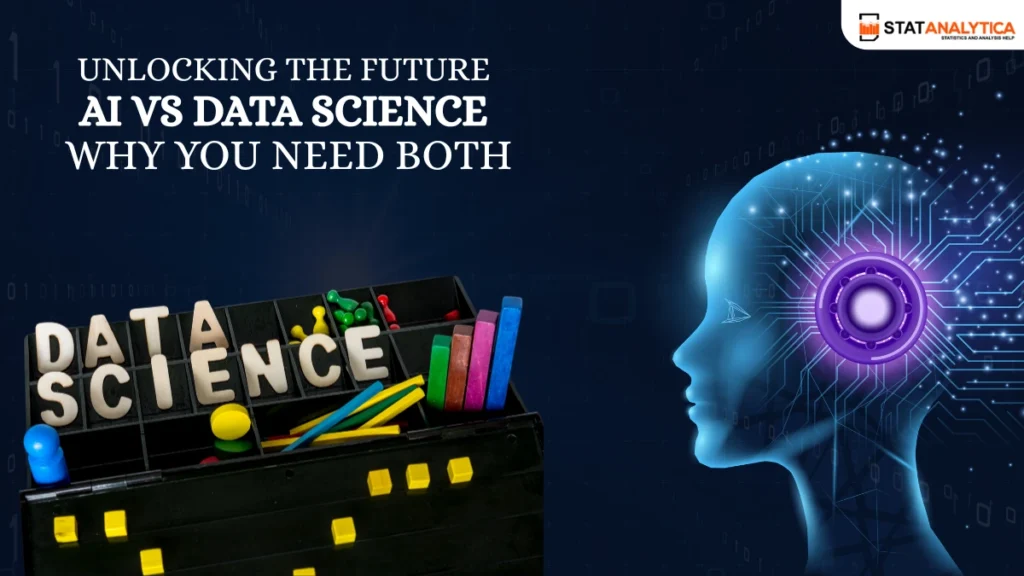The world of technology is experiencing a truly revolutionary phase, powered by two colossal fields: Artificial Intelligence (AI) and Data Science. Often used interchangeably, these terms represent two fundamentally distinct, yet wonderfully interconnected, disciplines that are driving unprecedented innovation and offering limitless career potential. Understanding the unique purpose, scope, and synergy of AI vs Data Science is the first step toward building a successful future in the digital age.
This comprehensive guide will demystify the relationship between these two incredible domains, highlight their core differences, and show you exactly how they work together to create the smarter, more automated world we live in.
Demystifying the Core Concepts: What is Data Science and What is AI?
Table of Contents
Before diving into the intricate comparisons, let’s establish a clear, straightforward definition for each field. Think of it like a beautiful landscape: Data Science helps you understand the map, while AI builds the self-driving car that navigates it.
Data Science: The Quest for Knowledge and Insight
Data Science is an interdisciplinary field that uses scientific methods, processes, algorithms, and systems to extract knowledge and insights from structured and unstructured data. It is the process of asking critical questions and using data to find the answers.
- Primary Goal: To analyze data, find patterns, draw actionable insights, and tell a story that guides human decision-making.
- Key Focus: The entire data lifecycle—from collection, cleaning, and processing to modeling, visualization, and interpretation. A Data Scientist is primarily a masterful investigator and communicator.
- Core Tools & Techniques (Related Keywords): Statistics, probability, data visualization, SQL, Python (Pandas, NumPy), R, predictive modeling, regression, and clustering.
Artificial Intelligence (AI): The Pursuit of Intelligent Machines
Artificial Intelligence (AI) is the broadest branch of computer science focused on building machines and systems that can perform tasks typically requiring human intelligence. AI aims to simulate cognitive functions like learning, reasoning, perception, and problem-solving.
- Primary Goal: To enable machines to act intelligently and autonomously by automating tasks and making predictions or decisions without constant human intervention.
- Key Focus: Creating the intelligent systems themselves. This includes everything from simple decision-making rules to complex neural networks that can learn.
- Core Tools & Techniques (Related Keywords): Machine Learning (ML), Deep Learning (DL), Natural Language Processing (NLP), Computer Vision, reinforcement learning, TensorFlow, and PyTorch.
The Astounding Relationship: Where They Connect and Diverge
The most common point of confusion—and the most important connection—is Machine Learning (ML). ML is fundamentally the bridge between Data Science and AI.
Machine Learning: The Critical Link
Machine Learning is a subset of AI that uses statistical methods to enable machines to improve performance on a task over time, primarily by learning from data.
- Data Scientists leverage ML algorithms (like classification or regression) to extract deeper insights from data and build accurate predictive models (e.g., predicting customer churn).
- AI Engineers use ML models to make their autonomous systems smarter (e.g., teaching a self-driving car to recognize a stop sign).
The key takeaway is that Data Science provides the foundation (the prepared data and the initial analysis), and AI (via ML) provides the engine (the learning algorithm) for the application.
AI vs Data Science: A Side-by-Side Comparison (The Ultimate Table)
To truly appreciate the remarkable differences, here is a comparison focusing on their primary orientation:
| Parameter | Data Science (Focus: Insight) | Artificial Intelligence (AI) (Focus: Action) |
| Primary Goal | Extract knowledge, insights, and tell a story from data. | Simulate human intelligence to perform autonomous tasks. |
| End Product | Actionable insights, reports, visualizations, predictive models. | Intelligent systems, applications (e.g., chatbots, robots, recommendation engines). |
| Core Question | “What can this data tell us?” and “What will happen next?” | “How can this machine/system learn and act like a human?” |
| Scope | Encompasses the entire data lifecycle; more interdisciplinary (math, stats, business). | Aims at building intelligent components; primarily a field of computer science. |
| Key Output | A recommendation for a business decision (e.g., “We predict sales will rise by 15% if we launch this campaign.”) | An automated action or process (e.g., A machine automatically recommends a movie based on your past viewing history.) |
Limitless Career Opportunities: Choosing Your Path in the Digital Gold Rush
Both fields are experiencing explosive growth and offer some of the most lucrative and future-proof careers in technology. Your choice between a career in AI vs Data Science often boils down to your passion and skillset.
The Data Science Career Path: The Investigative Storyteller
Data Scientists are essential to almost every industry—from finance to healthcare. They thrive on the blend of business acumen, statistical rigor, and programming ability.
- Roles: Data Analyst, Business Intelligence (BI) Analyst, Data Scientist, Statistician.
- The Ideal Candidate: Loves statistics, enjoys exploratory data analysis, has strong communication skills, and is driven by turning complex data into a simple, compelling business narrative.
The AI Engineering Path: The Autonomous System Architect
AI Engineers and specialists are the builders of intelligent systems. Their work requires a deeper dive into advanced programming, algorithm design, and computational efficiency.
- Roles: AI Engineer, Machine Learning Engineer, Computer Vision Engineer, NLP Specialist, Robotics Engineer.
- The Ideal Candidate: Is passionate about building and scaling systems, enjoys complex coding and algorithm optimization, and is excited by the challenge of creating machines that learn and adapt autonomously.
The Powerful Synergy: How AI and Data Science Drive Unprecedented Innovation
The most remarkable breakthroughs in modern technology don’t come from AI or Data Science in isolation—they come from their synergistic collaboration.
Imagine developing a revolutionary new medical diagnostic tool:
- A Data Scientist meticulously collects, cleans, and analyzes millions of patient records (X-rays, lab results, demographics). They use exploratory data analysis to find initial insights and patterns related to disease progression.
- An AI/ML Engineer takes that clean, structured data and uses it to train a Deep Learning model (AI) to recognize cancerous cells in a new X-ray image with incredible accuracy.
- The Data Scientist then analyzes the model’s performance, interprets the ethical implications of its predictions, and visualizes the results to make the AI’s output understandable and actionable for doctors.
In this scenario, Data Science prepared the ground and framed the problem; AI provided the intelligent solution. Together, they offer a complete, end-to-end process that drives real-world positive impact.
Conclusion: Embracing the Vibrant Future of AI and Data Science
The debate of AI vs Data Science is less about choosing one over the other and more about recognizing their unique and complementary strengths. Data Science is about making sense of the world through rigorous analysis and clear insight. Artificial Intelligence is about using that understanding to build a world that is smarter, more efficient, and more automated.
For anyone looking to dive into this field, the future is brighter and more promising than ever. By mastering the core concepts of data handling, statistical analysis, and algorithmic learning, you position yourself at the forefront of the next wave of technological excellence. Whether you choose to be the insight-driven Data Scientist or the system-building AI Engineer, you are choosing a career filled with innovation and unlimited potential.
Also Read: Generative AI in Educational Research and AI in Education
Is Machine Learning (ML) a part of AI or Data Science?
Machine Learning (ML) is a subset of Artificial Intelligence (AI), but it is a core tool and technique utilized heavily by Data Scientists. Think of AI as the ultimate goal (creating intelligence), ML as the specific method to achieve that goal (learning from data), and Data Science as the broader field that prepares the data and applies the method to extract insights and solve business problems.
Which field, AI or Data Science, offers a better career path?
Both fields offer exceptional career paths with high salaries, incredible demand, and accelerated job growth. The “better” path depends entirely on your personal interests. If you thrive on statistical analysis, data visualization, and translating insights to business stakeholders, Data Science is for you. If you are passionate about advanced coding, algorithm design, and building autonomous, decision-making systems, AI/Machine Learning Engineering is likely a more rewarding fit. You can explore current job trends and requirements on platforms like Kaggle’s job section to see the diversity of roles available.
Do I need a Ph.D. to work in AI or Data Science?
For most entry- to mid-level roles, a Bachelor’s or Master’s degree in a quantitative field (like Computer Science, Statistics, or Mathematics) is sufficient to enter Data Science or AI. However, a Ph.D. is often highly beneficial—and sometimes required—for cutting-edge AI research roles, such as those focusing on Deep Learning, specialized Computer Vision, or Generative AI models, as these involve developing completely new algorithms and methodologies.


